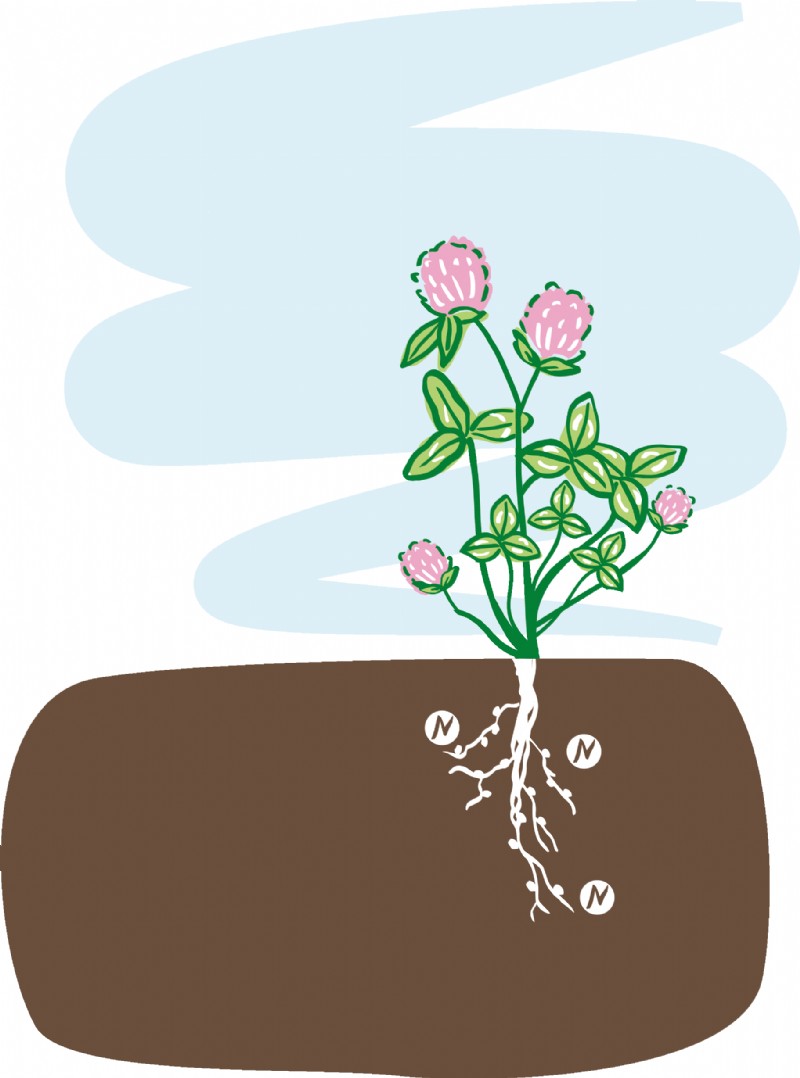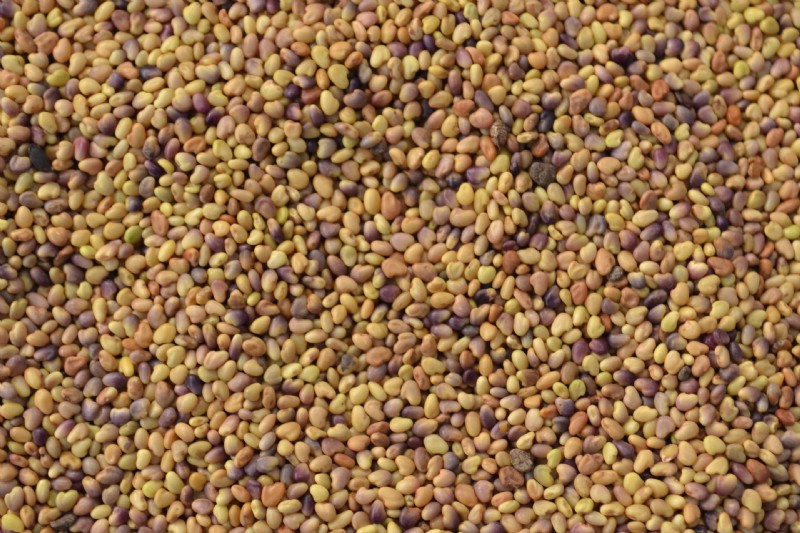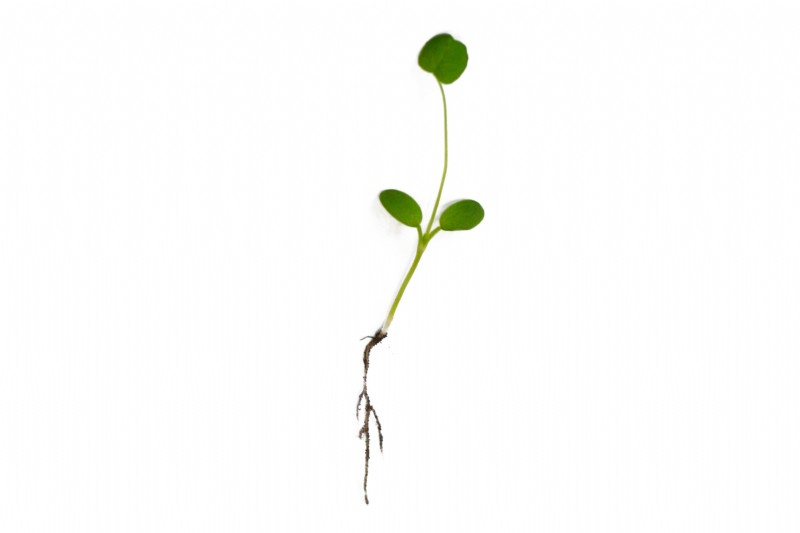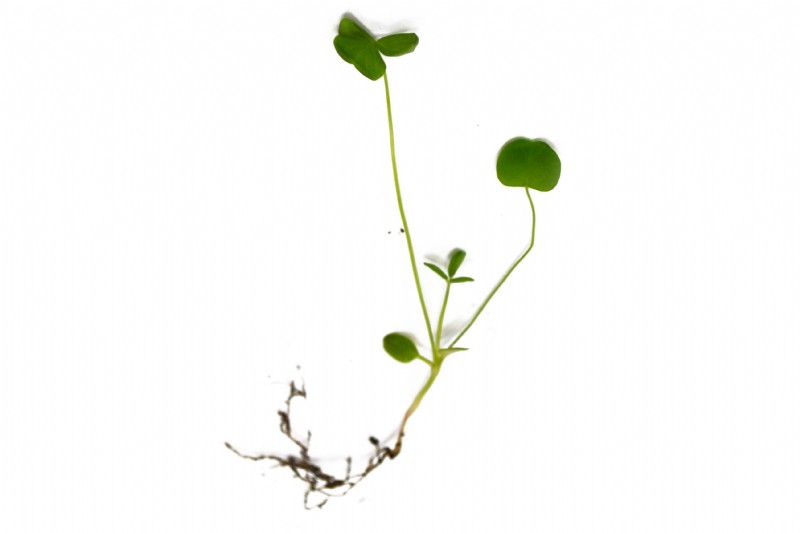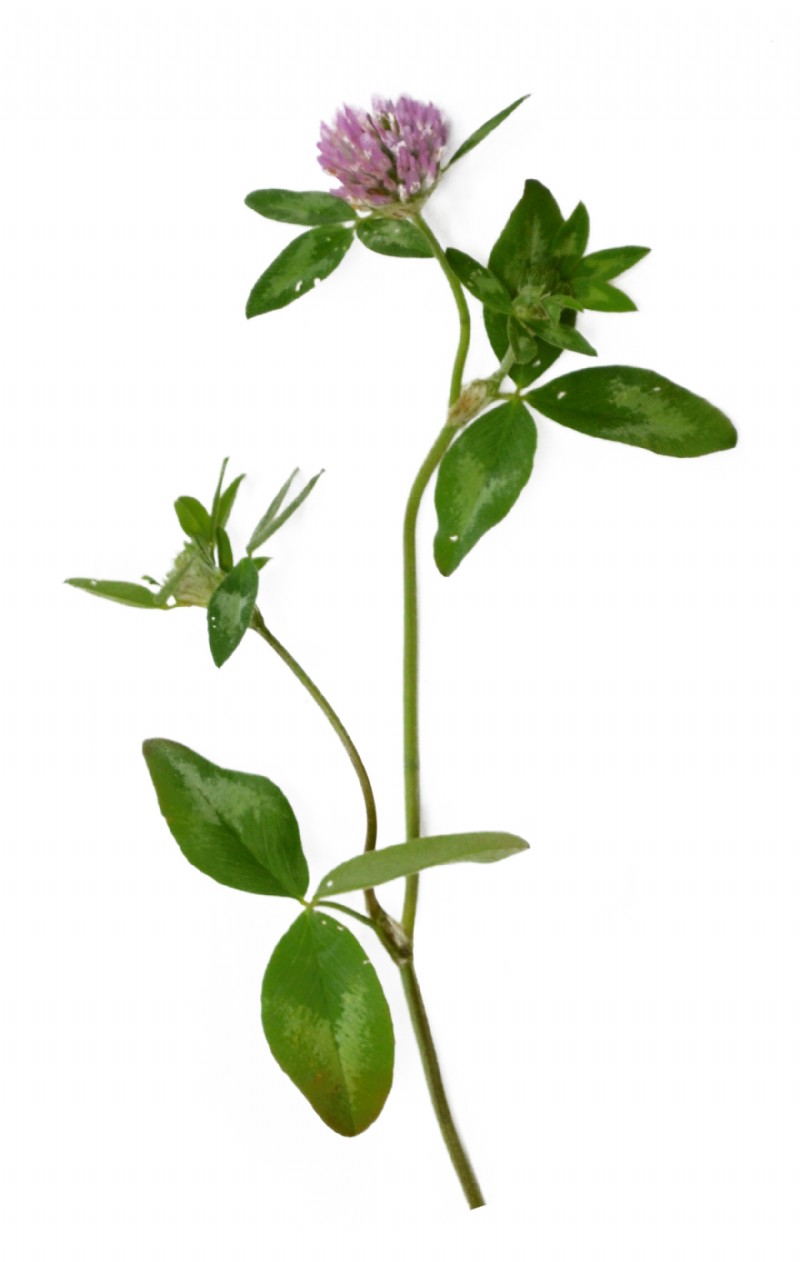Late Flowering Red Clover
Red clover is one of the most popularly used true clovers in the UK. Once established it’s capable of rapid growth and shows reasonably good persistence up to three years, although ongoing breeding work is being carried out to increase plant persistence. The 'single cut' or 'late' strains of red clover, notably the diploid variety altaswede provide one large cut per season, flowering once per season, approximately 2-3 weeks later than the 'double cut' early strains.
Uses
Generally use for silage mixtures, providing one large cut in mid June. The single cut species stand up better to grazing.
Persistence
A perennials species, normally more persistent than the early varieties.
Strengths
More palatable and digestible than pure grass forage and this is one reason why livestock perform well when fed clover. It Provides a home grown source of protein and more forage intake with a high protein content leads to greater live weight gain and milk yields. The single cut is better suited for aftermath grazing than other red clover species, because it produces more leafy tillers, which help for a better ground covering sward. It fixes nitrogen and when grown in forage leys offers a cheap alternative to nitrogen fertiliser. It also provides a very good soil improving break crop in arable rotations, with a particularly strong tap root for improving soil structure.
Frost Tolerance
Good frost tolerance.
Yield
5 - 6t DM per ha.
Sowing Rate Advice
6kg per acre - 15kg per ha.
Mixture Sowing Rate Advice
2.5kg per acre / 6.25kg per ha.
More suited to grazing in mixtures that provide one big silage cut and good autumn aftermath grazing for lamb fattening.
Ideal Sowing Time
Sow in warm soils from May to early September.
Management
Red clover should be mown regularly when it reaches a height of 30cm. The first cut may be before this if there is a severe weed problem. Red clover is more susceptible than other species to the soil borne disease Sclerotinia trifoliorum and the stem nematode, Ditylenchus dipsaci, responsible for the widespread clover sickness in the 1970s and 80s. For this reason, there should be a four year gap between the red clover crops. Other fertility building crops such as white clover can be used as an alternative. Although not the most rapid to establish, red clover generally competes will against weeds. It also grows back rapidly after topping, which is important in out-competing weeds.
Distinguishing characteristics
Seed
This is a rounded, kidney shaped seed. It varies in colour from dark brown to yellowish, green. It is dull in colour with a smooth texture and is approximately 2-3mm in length. It is a larger seed than white clover.
Seedling
The seedling develops two oblong cotyledons, on short, stout stalks. The cotyledons are nearly as wide as they are long and the first true leaf is situated on a stipule with a minute hairy covering.
Flowering Plant
A dark green legume.
The trifoliate shaped leaves are on short stalks, generally narrower than early cut clovers, each leaflet has its own very short petiole.
Each of the leaflets are oval in shape, with a pale almost inverted crescent on the upper surface. The margin of the leaf is not toothed, unlike other clovers.
The plant may be hairy, or now and again non hairy, late red clover generally has more stems than the early type and is more tufted in growth habit. The stems are generally solid in their structure until the plant flowers, when they may become hollow.
The inflorescence can vary in colour from red to pink and very occasionally white, normally only flowering once per season.
The root has a pronounced, strong taproot, with finer lateral branches on either side, the aerial part of the plant grows from a crown slightly above the soil surface.
Additional Info
Average seeds per kg - 560,000. Normally ready for cutting in mid June. Average protein content 19%. Bloat can be an issue if grazing red clover swards, especially in cattle. The high oestrogen content of the plant can cause issues when fed to breeding stock during tupping or serving. Pure stands of red clover can yield approximately a third less than a grass and clover mixture. When compared to early, 'double cut' red clover varieties like merula, the later flowering red clovers generally have more stems with narrower leaves.
Works well with
Late red clover can be grown with intermediate or late perennial ryegrass species to provide high protein silage and good aftermath grazing. It may also be a constituent of longer term drought resistant mixtures with species like cocksfoot, however it will normally disappear from the sward over time.You can find Late Flowering Red Clover in the following mixtures
- ‘Single Cut’ Red Clover Ley Heavy Land Mixture
- ‘Single Cut’ Red Clover Ley for Heavy Land 70% ORGANIC
- Long Lasting Upland Dual Purpose Mix
- Long Lasting Upland Dual Purpose Mix 70% ORGANIC
- Wetland Dual Purpose Long Term Mixture
- Wetland Dual Purpose Long Term Mixture 70% Organic
- ‘LAMINS’ Drought Resistant Four Year Grazing Ley Dry, Light Land
- ‘LAMINS’ Drought Resistant Four Year Grazing Ley 70% ORGANIC
- Operation Pollinator Mix (AHL1/CAHL1/AB1)
- Pollen & Nectar Mix Grass & Legume Margin
- Pollen & Nectar Flower Mix Grass & Legume Margin 70% ORGANIC
- Orchard Clover Understory Mixture
- Drought Tolerant Over-Seeding Mixture 4-5 Year - 70% Organic
- Nectar Stewardship Mix (CIPM2/IPM2/AB8)
- Fertility Builder One-Two Year Mixture 70% ORGANIC


